How To Make A Sourdough Starter From Scratch
This post may contain affiliate links, which means I’ll receive a commission if you purchase through my links, at no extra cost to you. Please read the full disclosure here.
A homemade sourdough starter is the foundation to a good crusty loaf of sourdough bread, but it could also be used to make many other delicious baked goods.
Making your own sourdough starter from scratch is an easy and interesting process that anyone can do. Learn how to make your own sourdough starter from scratch step by step.
What is a Sourdough Starter?
A sourdough starter is a natural yeast made with wild yeast from the air. Flour and water are mixed together and are allowed to ferment over a period of time. This fermentation period is what makes the regular flour and water turn into usable yeast for baking.
Many people also can digest sourdough bread made with sourdough starter better than bread made with store-bought yeast.
What Can I Do with My Sourdough Starter?

You can use your sourdough starter for a variety of things. Of course, you can make sourdough bread. You could also make sourdough English muffins, waffles, pancakes, pizza crust, and more!
This is a great English Muffin recipe from Calico and twine, and this is my favorite Sourdough Pizza Crust recipe from Joshua Weissman.
When you maintain the sourdough starter you will have to discard a little bit regularly, however, there are many recipes that use sourdough discard instead of just throwing it out. You can make crackers, pasta dough, biscuits, scones, etc.
Little Spoon Farm has many delicious sourdough discard recipes that I can’t wait to try!
How to Feed a sourdough starter
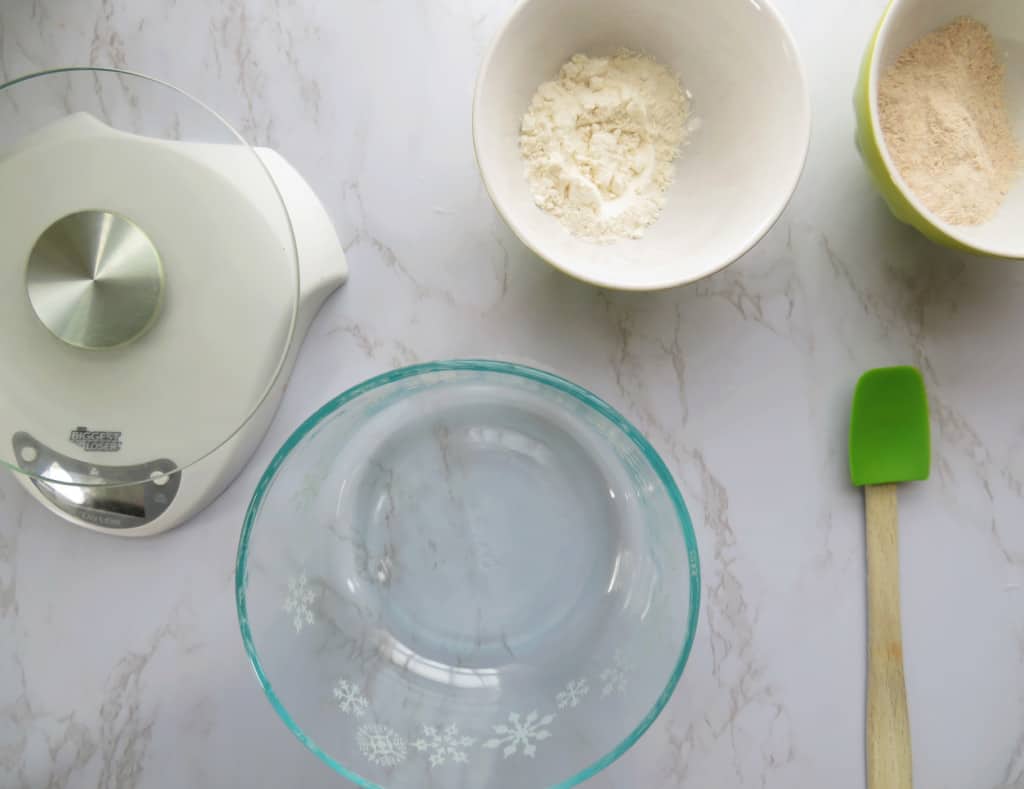
Feeding the sourdough starter is the most repeated process in having a starter. You will feed the starter a few times a day when you are establishing the starter and once a day thereafter.
First, place a clean bowl on a kitchen scale. Tare the scale – set the scale to zero. Then add 20 grams of whole wheat flour, 20 grams of all-purpose flour, and 40 grams of distilled or filtered water.
Mix everything together with a non-metallic spoon. Cover the bowl with a lid or plastic wrap and a rubber band. You want the sourdough starter to be covered so dust and fruit flies can’t get into it.
Ingredients for starter Starter ingredients mixed together Starter after 24hrs
Discarding half of the starter
When creating a mature sourdough starter, you will need to discard half of the starter and replace it with fresh flour and water. If you don’t discard some of the starter regularly the starter will not grow properly and you can end up with too much starter. The goal is to maintain the same amount of starter, while strategically fermenting it, this is done by discarding half of it daily.
- You can throw the discard into the trash, or sink. I wouldn’t use the discard in recipes until the starter is mature.
Starter Day 2 Starter Day 3 – Morning Starter Day 3 – After Morning Feeding
Beginner Sourdough Starter Tips:
- Warm but not too warm environment: Make sure you don’t keep the sourdough starter in an environment that is too warm. This can cause the starter to ferment too fast which can potentially cause mold.
- Use a Non-metal spoon: Use either a wooden, silicone, or plastic spoon to mix your sourdough starter because metal can react with the sourdough starter yeast.
- Use distilled or filtered water: Only use distilled or filtered water to feed the sourdough starter. You don’t want any minerals interacting with the sourdough starter.
- What flour to use?: I have found the best success in creating a sourdough starter by using a mix of whole wheat flour and all-purpose flour.
- If you see mold – throw starter away: If at any point you see orange, red, blue or white fuzzy mold in your sourdough starter throw it away. This can be caused by soap residue in the bowl, the starter fermenting too fast, or a fruit fly getting inside your starter.
- Feed your starter everyday – don’t skip: When you are first creating your sourdough starter, it is really important to feed your starter everyday until it is established. It can be hard for the starter to grow and develop properly if feeding days are skipped.
- How to tell if your starter is ready for baking?: You starter will be ready to use for baking in about 7 days. It should double in size consistently a few hours after each feeding. It should smell musky and sour. And it should look super bubbly, light and airy.

Sourdough maintenance and storage:
- Store in the refrigerator for infrequent baking: Once your sourdough starter is mature, you can store it in the refrigerator for extended periods of time. Just make sure you feed it at least once a week to maintain it. Feed it right before putting it into the refrigerator. After a week take it out, allow the starter to warm up on the counter for a few hours. Then discard half of the starter, then feed it like normal. Allow the starter to sit on the counter for a few hours then return it to the refrigerator.
- OR you can leave the starter on the counter for more frequent baking. If you are baking regularly, you won’t need to store the starter in the refrigerator. You only need to feed the starter once a day and use it as needed.
Tools You May Need:

Kitchen bowl with a lid or plastic wrap with rubber bands

Non-metallic spoon
Making a sourdough starter from scratch is easy once you know the basics and some tips for making the process smoother. I love using my sourdough starter to make sourdough bread, English muffins, and sourdough pizza. I hope you will try to make your own sourdough starter soon! If you do, leave me a comment, a star rating, or tag me on Instagram (@themidwestkitchenblog). Enjoy!
Looking For More Recipes?
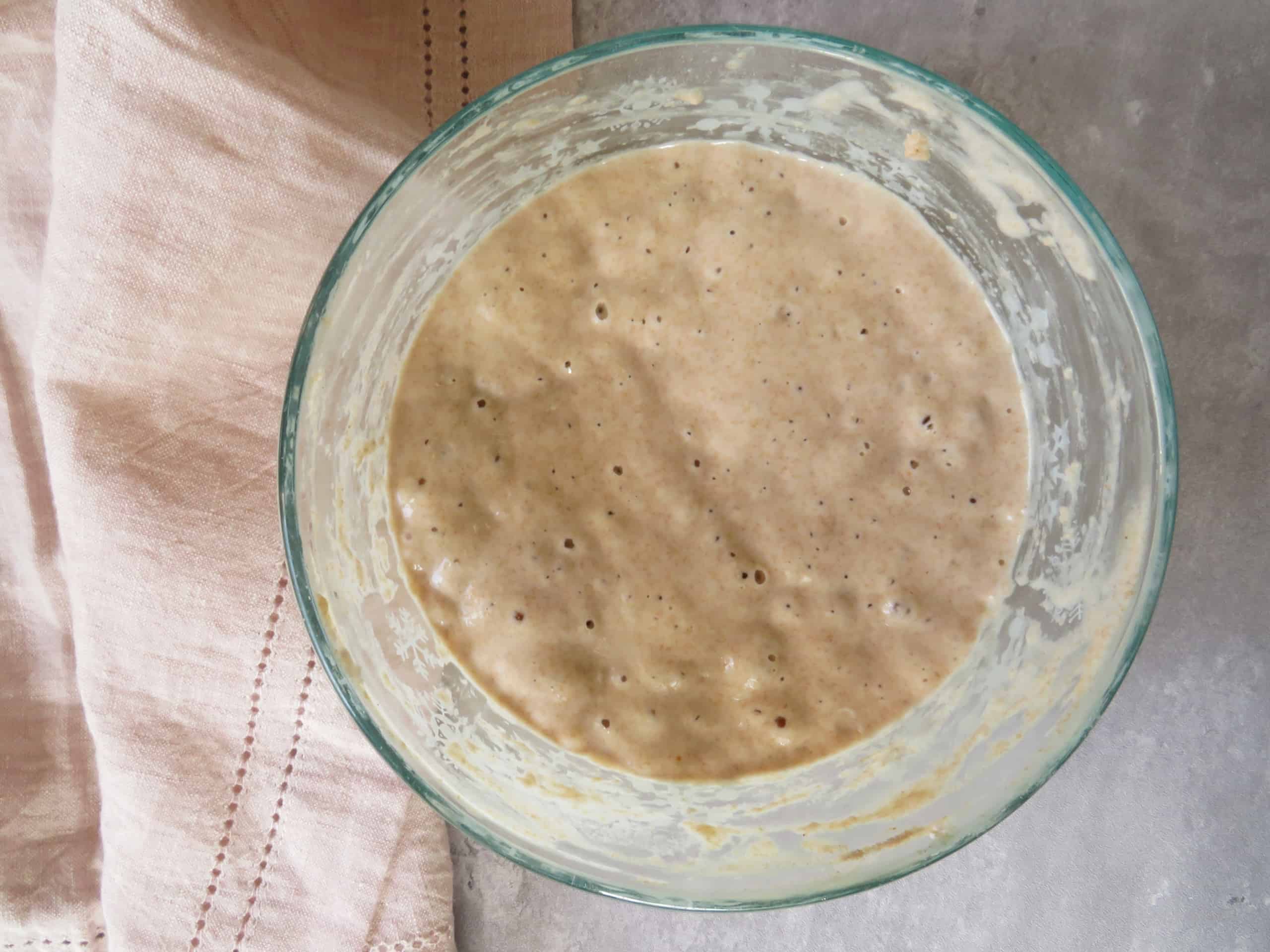
How To Make A Sourdough Starter From Scratch
Ingredients
- 20 grams all-purpose flour
- 20 grams whole wheat flour
- 40 grams distilled or filtered water
Instructions
- Day 1 - Tare a kitchen scale to zero. In a clean mason jar or medium-sized bowl, measure out 20 grams of all-purpose flour, and 20 grams of whole wheat flour. Then add 40 grams of distilled water. Mix together with a plastic or wooden spoon. You should have a pretty thick paste. Cover the mason jar or bowl with plastic wrap or a lid. Allow your sourdough starter to sit in a warm environment for 24 hours.
- Day 2 - Today we are beginning twice-a-day feedings of the sourdough starter. To the existing starter, add 20 grams of all-purpose flour, 20 grams of whole wheat flour, and 40 grams of distilled water. At this point, your starter might smell like pie crust or pie dough. There should be a few small bubbles on the surface. Cover as before, and place it in a warm environment for 12 hours. Then discard half of the starter and feed as before. You could feed and discard the starter in the morning and at night.
- Day 3: The starter should have more bubbles on the surface than yesterday. It may have doubled in size. It should start to smell musky leaning towards a sour smell. This is all normal. Discard half of the starter and feed like before. Cover for another 12 hours, discard and feed.
- Day 4, 5, 6, 7: Discard and feed the starter like before, twice a day. Over the next few days, it should start looking fluffy, doubling in size a few hours after feedings, and smelling a little bit sourer.
- By day 6 or 7 your sourdough starter should be ready. It should double or triple in size a few hours after each feeding. It should smell musky and sour. And it should be very bubbly, light and airy. Use in your favorite sourdough recipe. Enjoy!
Notes
All nutrition information is automatically generated and should be only used as a rough estimate. This recipe card may contain affiliate links.
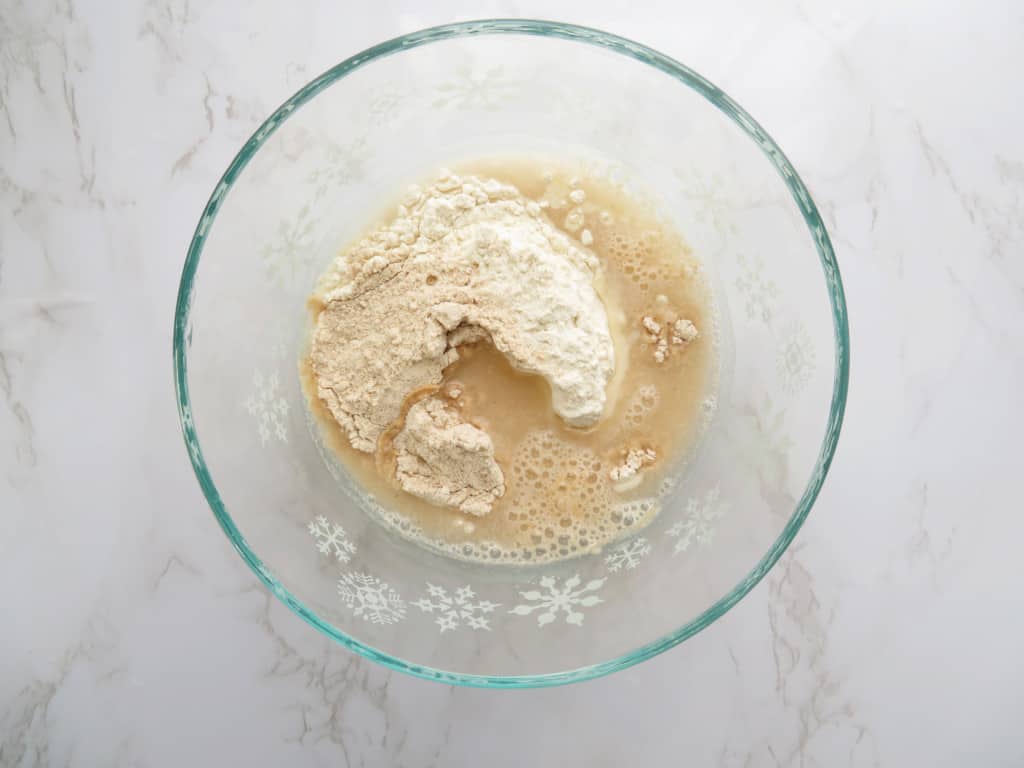
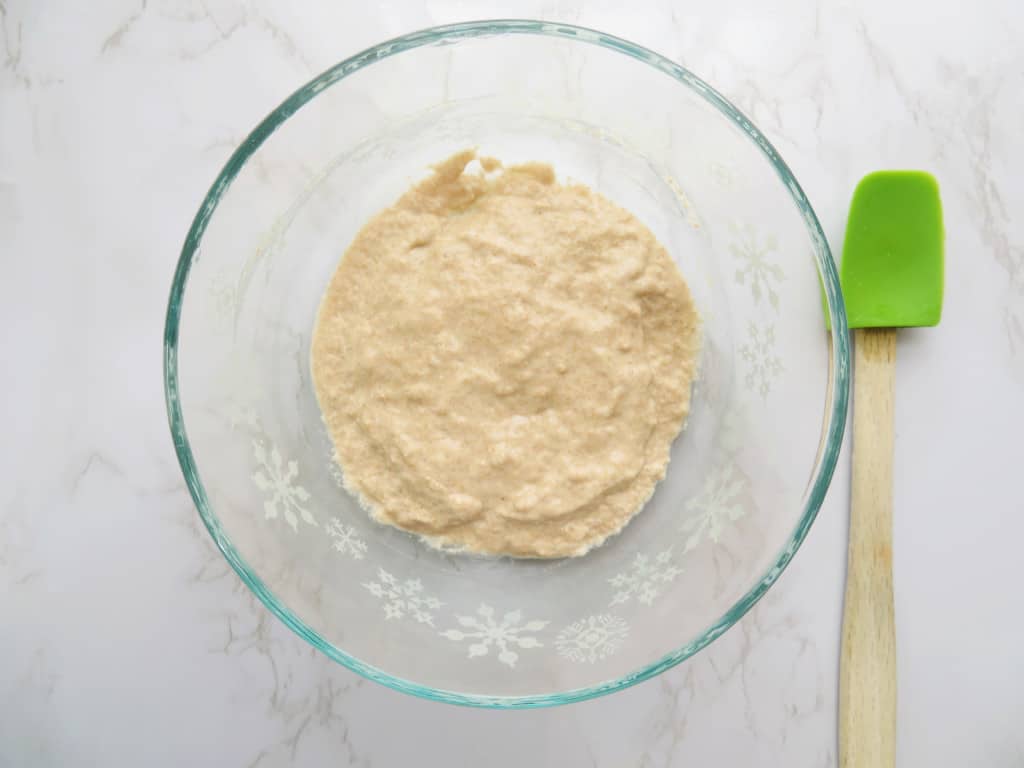
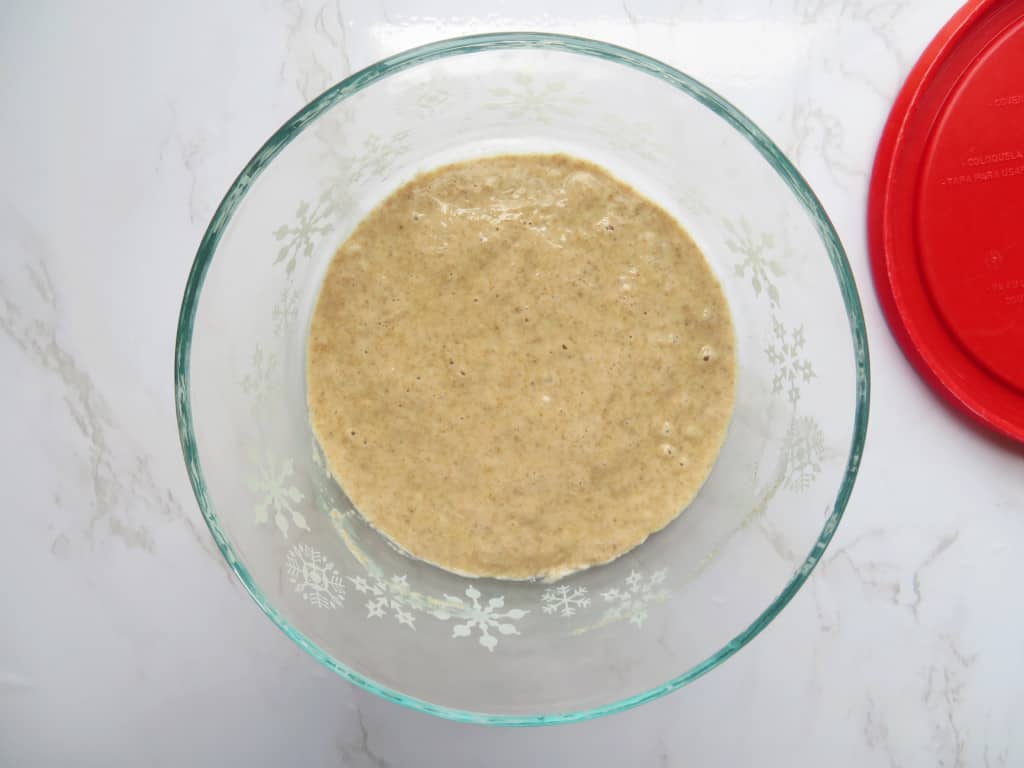
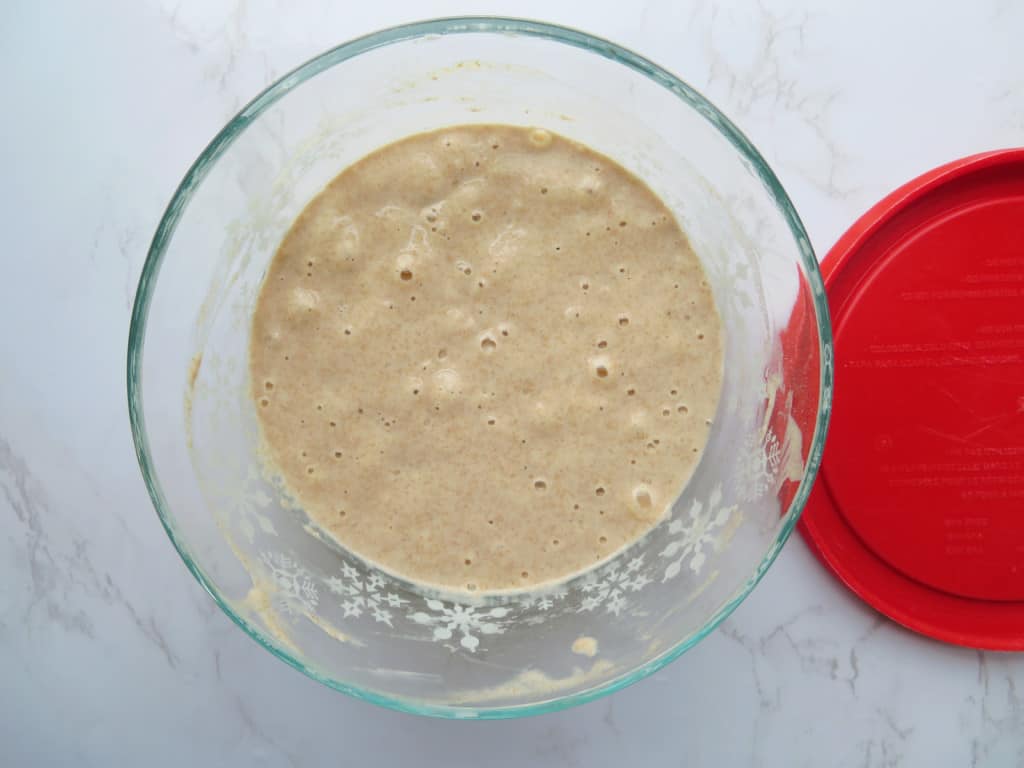
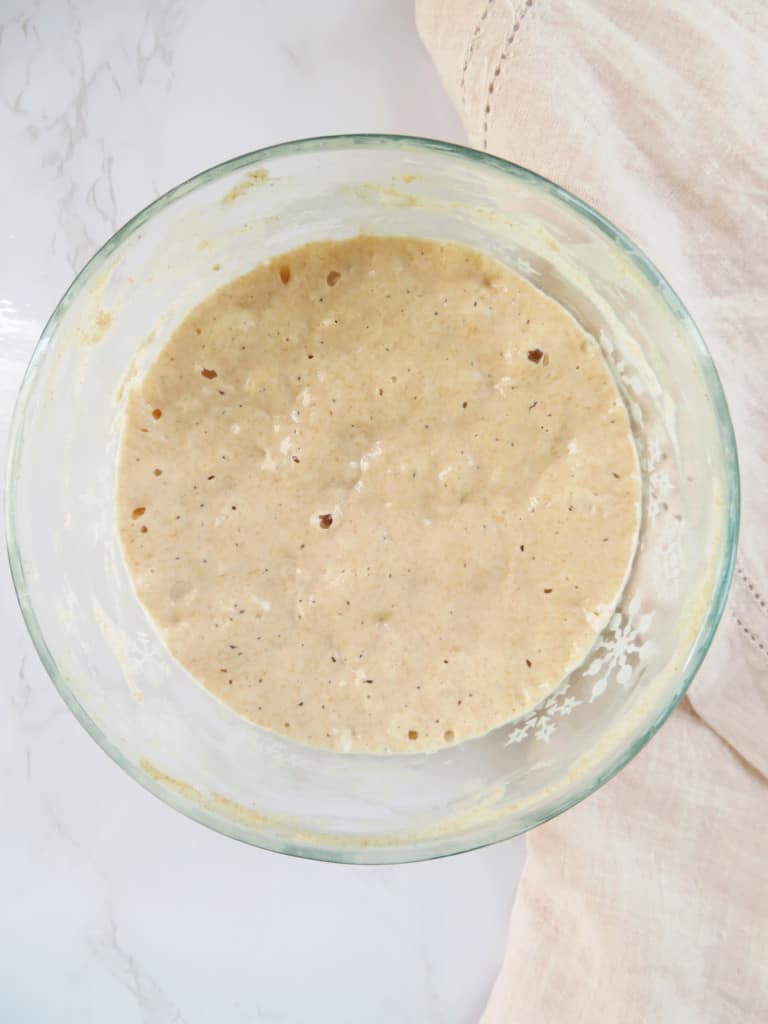
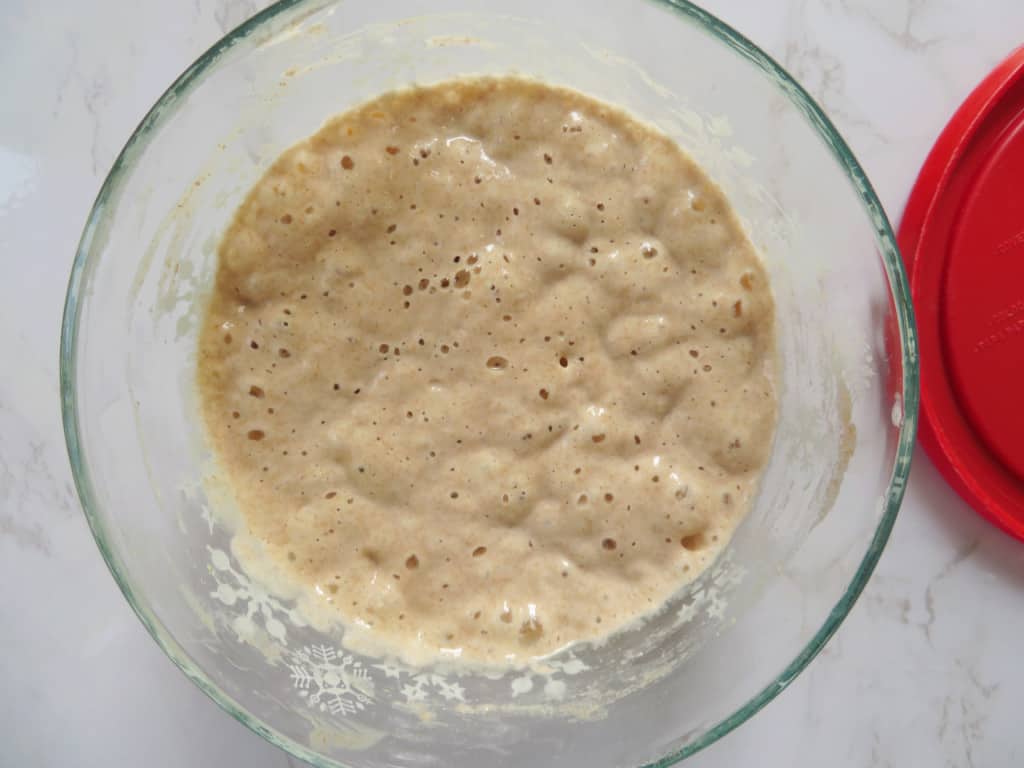
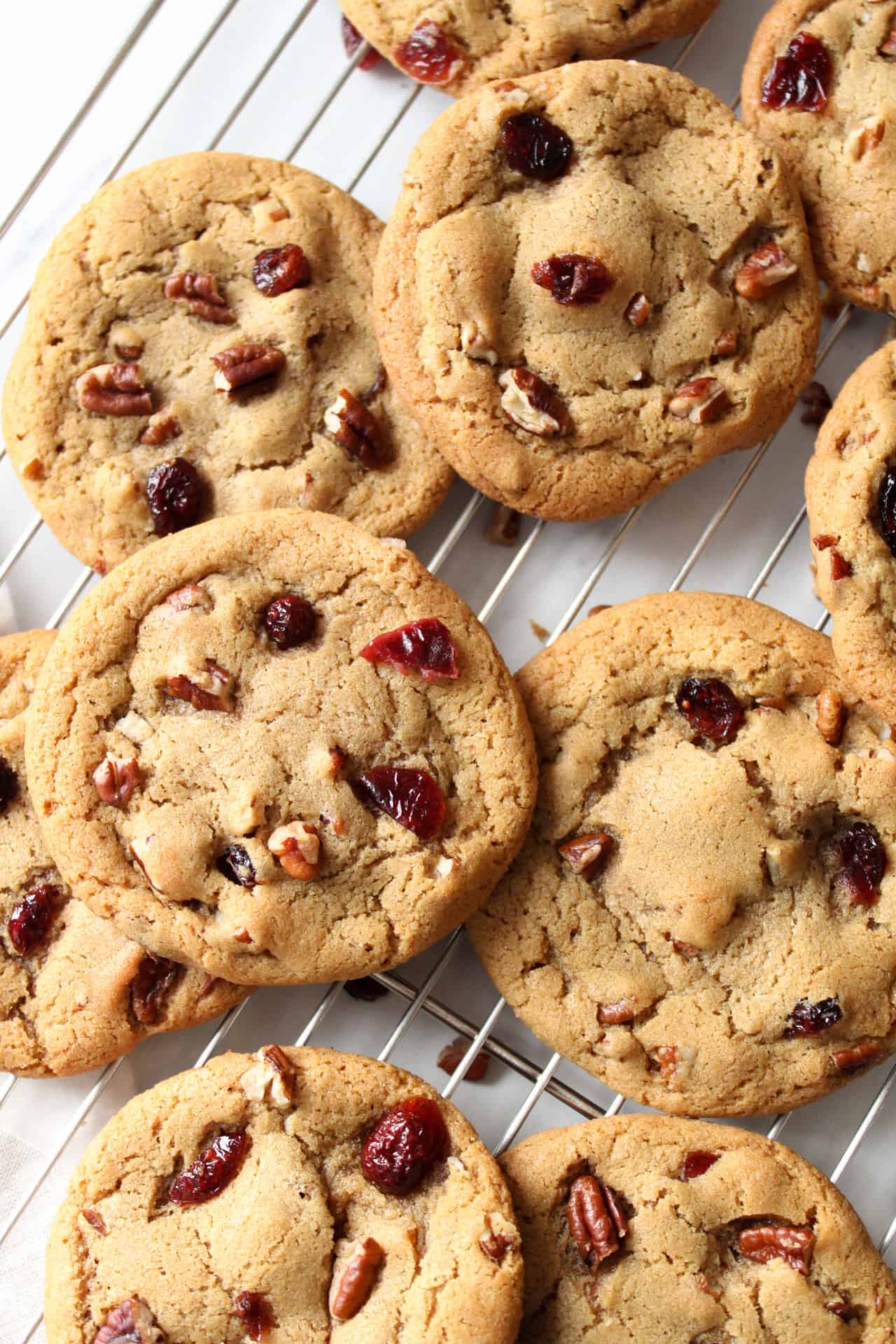
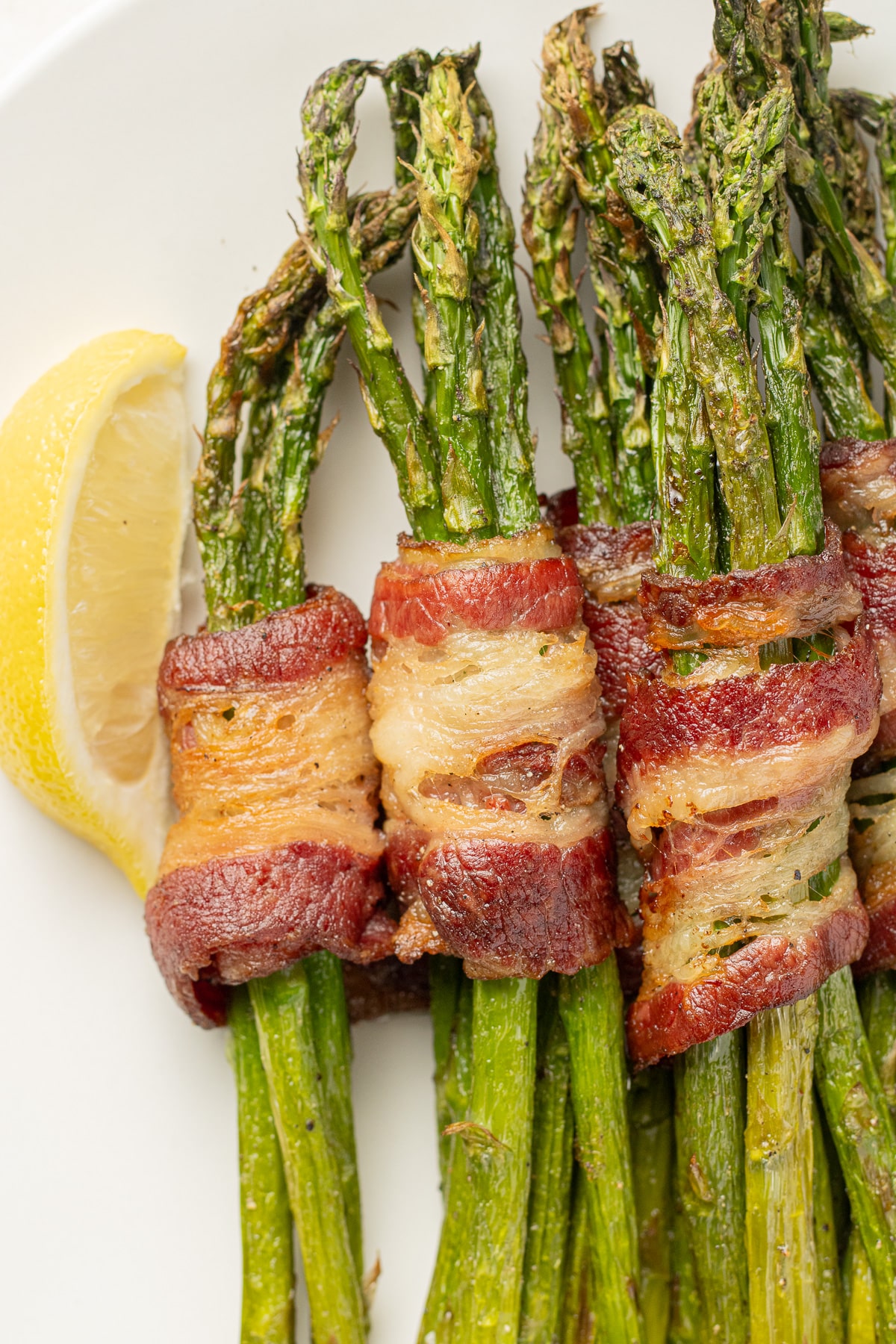
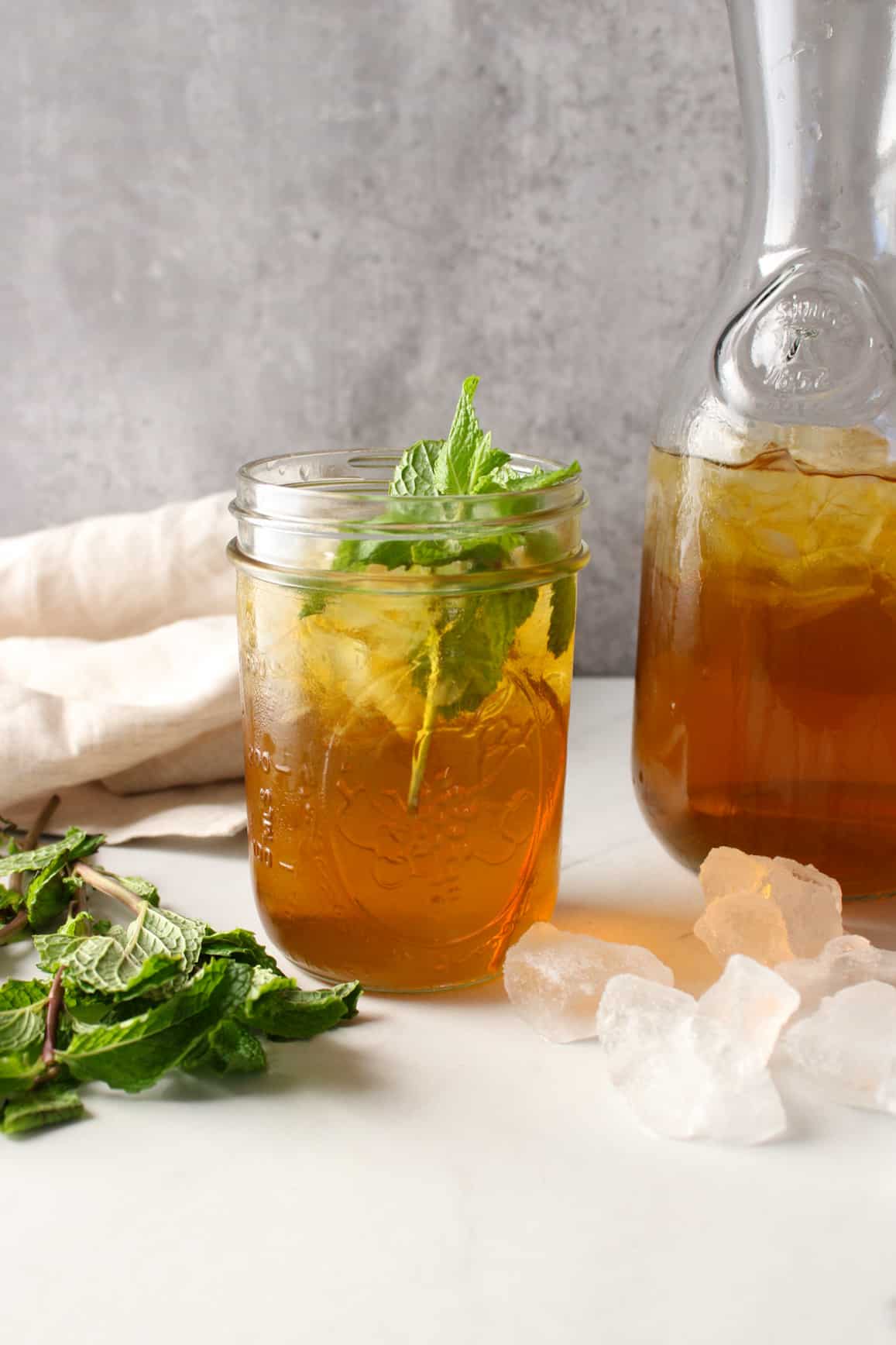
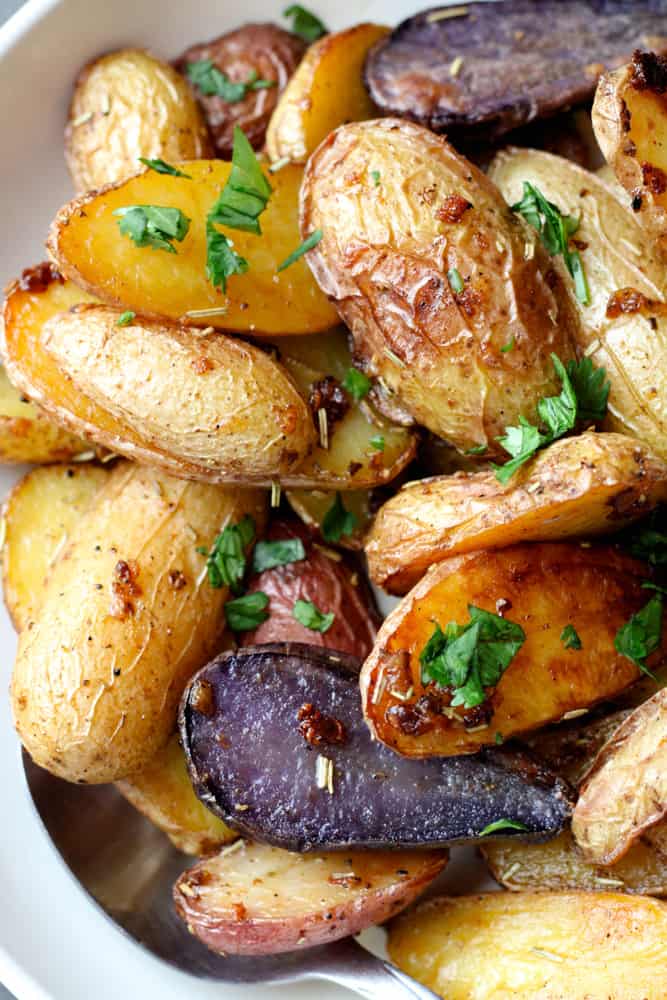
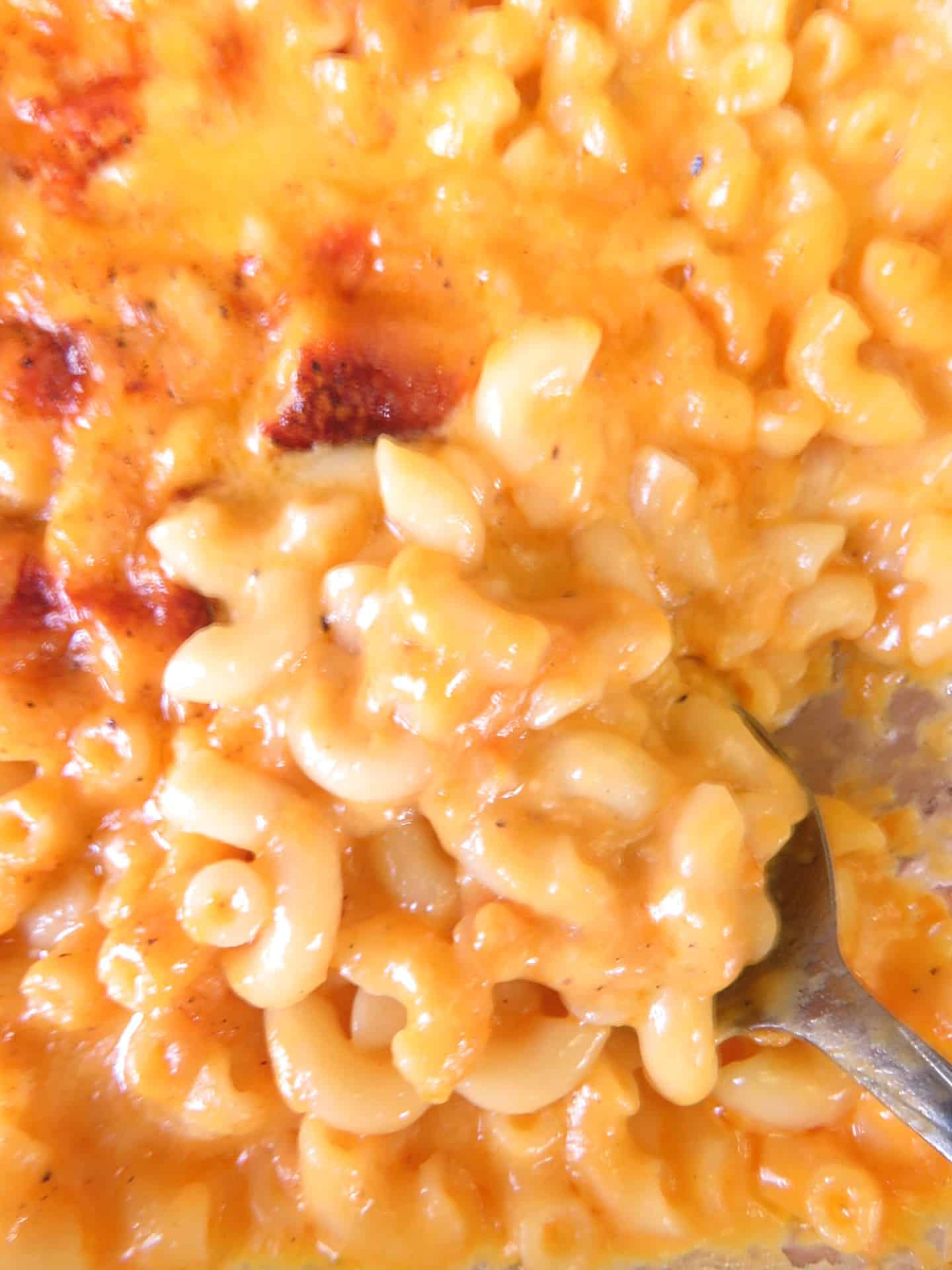
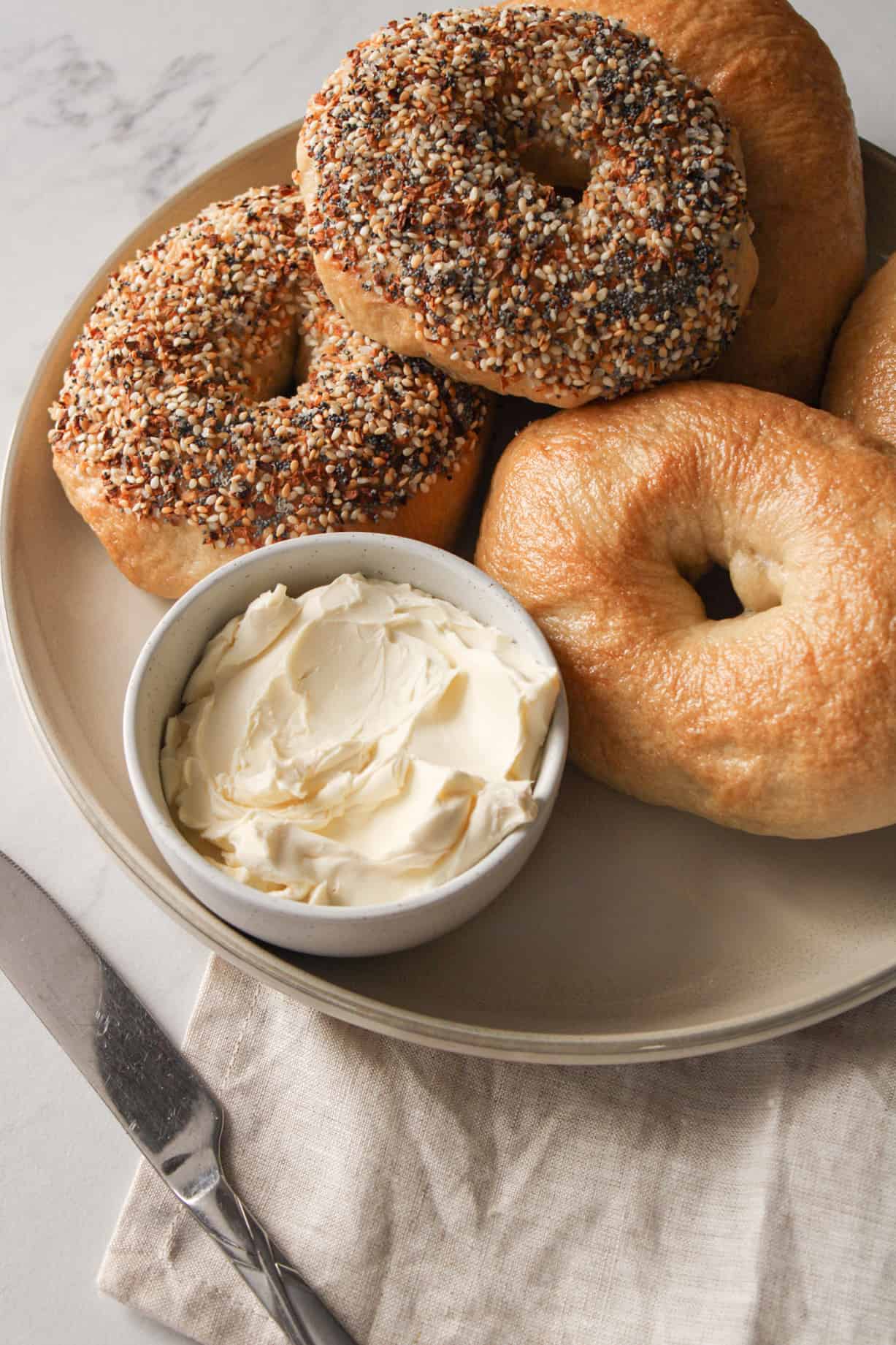
can i use almond flour?
Hi Sarina. No almond flour can’t be used in place of wheat flour because it lacks the necessary starches and gluten to be a yeast and rise the dough.